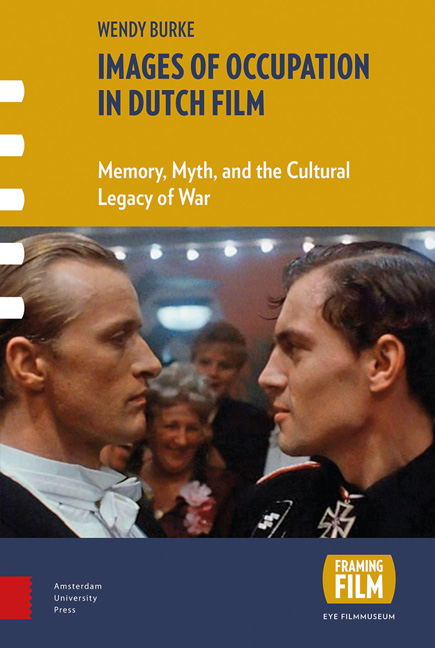Book contents
- Frontmatter
- Contents
- Acknowledgements
- Note on Translations
- List of Illustrations
- Dedication
- Introduction
- Chapter 1 Representation, Occupation, and Dutch War Films
- Chapter 2 The Image of the Enemy
- Chapter 3 Dutch Identity and ‘Dutchness’
- Chapter 4 Life Under Occupation
- Chapter 5 Resistance and Collaboration
- Conclusion
- Notes
- Filmography
- Bibliography
- Glossary of Dutch and German Terms
- Appendix Top dutch films by box office admissions
- Index
Chapter 5 - Resistance and Collaboration
Published online by Cambridge University Press: 11 December 2020
- Frontmatter
- Contents
- Acknowledgements
- Note on Translations
- List of Illustrations
- Dedication
- Introduction
- Chapter 1 Representation, Occupation, and Dutch War Films
- Chapter 2 The Image of the Enemy
- Chapter 3 Dutch Identity and ‘Dutchness’
- Chapter 4 Life Under Occupation
- Chapter 5 Resistance and Collaboration
- Conclusion
- Notes
- Filmography
- Bibliography
- Glossary of Dutch and German Terms
- Appendix Top dutch films by box office admissions
- Index
Summary
It was a story whose historical accuracy was of less significance than the function it served. It was a myth, all the more powerful for being upheld as documentary.
Ian McEwan, Black Dogs (1998: 50)Of the themes explored in this book, resistance and collaboration are the most powerfully communal and mythologized. They are the most prone to re-writing according to social memory and amnesia and to being transmitted into the realms of collective myth. This is connected to the enduring strength of the pervasive myth of the resistance in Dutch post-war society—and an associated ‘reverse myth’ about collaboration.
This myth of resistance relates to the perceived very large numbers of men and women taking part in wartime resistance activities according to Dutch popular memory (in turn reflected in cultural texts such as films). The number officially engaged in resistance activities was in fact small: around 25,000 people up until September 1944 (Louis de Jong 1976: part 7 2nd half: 1012). Out of a Dutch wartime population of nine million, this is less than 0.3 per cent. The ‘reverse myth’ of collaboration concerns the apparently low number of wartime collaborators that might be gleaned from popular thinking, which was also markedly different from reality. About 20,000 Dutch people took the most extreme collaborative step of joining the Waffen SS, the armed unit of the SS which had a heavy presence in the occupied Netherlands (Barnouw 1986: 18-19).
It is remarkable that these figures of official Dutch resistance fighters and extreme collaborators do not differ significantly. As the figure for collaborators does not include involvement in lesser though still significant forms of collaboration such as informing to the Sicherheitsdienst or membership of the NSB, it is not difficult to conclude that wartime collaboration in fact outweighed resistance. This ratio is rarely the one depicted in Dutch films about the war, especially in the early 1960s, in which a decidedly resistance-biased image is presented, although collaboration asserts its presence eventually in later decades. For resistance and its dark mask, collaboration, have loomed so large in the Dutch psyche over the post-war decades that they have been present—or absent—all along in the films.
- Type
- Chapter
- Information
- Images of Occupation in Dutch FilmMemory, Myth and the Cultural Legacy of War, pp. 183 - 210Publisher: Amsterdam University PressPrint publication year: 2017



